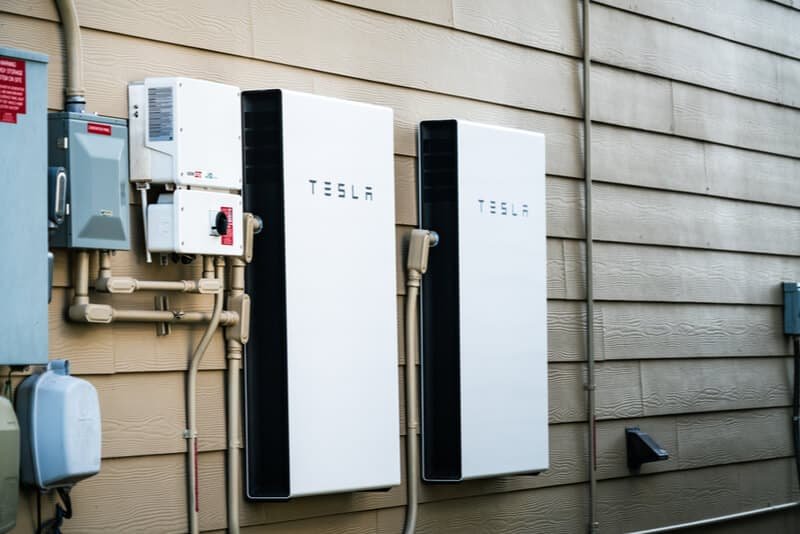Energy Storage Resources
-

BLUETTI’s latest ESS helps Californians combat NEM 3.0’s costly revenue losses
Effective April 14, 2023, California’s net metering policy update, referred to commonly as NEM 3.0, has changed the solar landscape in the Golden State. California moved from offering a credit equivalent to the retail electricity rate for exported solar production to a time-of-use rate structure. As a result, solar energy sold to the grid during off-peak hours earns lower returns, while energy sold during peak hours receive higher prices. As standalone solar systems require longer payback periods, homeowners are increasingly motivated to integrate battery storage into their solar setups to reduce costs and potentially earn improved compensation for selling energy back to the grid.
-

Installing solar isn’t the only big financial decision to make about controlling home power
After a year of extreme weather and wildfires, the power going out again is becoming familiar to more Americans. That means it may be a good time to consider a home backup power storage system. The pervasiveness of extreme weather and climate change, local utility reliability and cost may all factor into this financial decision. Here’s what consumers need to consider about home back-up power options:
-

This startup turns electric water heaters into grid batteries
Shifted Energy is tapping water heaters in lower-income communities to create virtual power plants that help balance the grid. This startup has built one of the country’s most advanced virtual power plants on a ubiquitous piece of household technology — electric water heaters.
-

Best Solar Batteries of 2023
Solar batteries won't let any of your energy from solar panels go to waste. Installing battery storage with your panels decreases your reliance on the power grid, allowing you to still have power during outages, use solar energy to power your home at night (instead of buying electricity from the power grid) and even go off-grid entirely. CNET ranks the best solar batteries for 2023.
-
Tesla expects massive savings for Powerwall owners in California following net metering change
Tesla is expecting its Powerwall to become an even bigger asset for homeowners with solar after a net metering change. California just changed its net metering rules. The new Net Billing Tariff (NBT), sometimes referred to as NEM 3.0, is now a solar net billing policy, and it basically results in a reduction in credit for sending energy back to the grid.
-

Pairing EV charging with solar+storage opens a world of possibility
A solution to EV charging hurdles is to pair EV charging infrastructure with on-site solar and energy storage solutions. This approach to clean energy modernization keeps chargers running, alleviates pressure on the grid, and brings other significant benefits to local communities.
-

Ditch the grid and make your home more eco-friendly with these home battery systems
Owning a battery backup system is a great way to provide clean, eco-friendly energy to your entire home throughout the year. Here's how to gain an independent energy source that can power your home at night or during an outage. And with modular systems, you can add storage batteries or solar panels as needed to keep up with your changing energy needs.
-

Battery Storage for Homeowers
Solar United Neighbors has developed this guide to educate homeowners about adding storage in their homes. We examine the types of batteries that are available and how they can be used in your home. We then dig into the economics of battery storage to help you understand if adding battery storage can make financial sense for you.
-

Energy Storage 101
Energy storage is the linchpin of the clean energy transition. The more renewable energy on the grid, the better—but these resources only produce power when the sun is shining, or the wind is blowing. Energy storage can “firm up” renewable resources, maximizing their value to the grid. In addition, energy storage can reduce the cost of electricity (storing energy when it is cheapest, dispatching it when it is most expensive), and increase the reliability of our aging electric grid increasingly strained by climate change.
-
End-of-life EV battery packs find a new use as stationary storage
Second-life energy storage system Smartville said it deployed its first commercially available product, the MOAB energy storage system, at the University of California San Diego’s Library Annex. The company said that most batteries retired from electric vehicles retain 70% of their storage capacity, making them candidates for stationary storage before being recycled.
-

Recycled batteries from EVs get new life
Hundreds of used electric vehicle battery packs are enjoying a second life at a California facility connected to the state’s power grid, according to a company pioneering technology it says will dramatically lower the cost of storing carbon-free energy.
-

Tesla Megapack farm takes shape at Arroyo Solar and Storage project in New Mexico
It appears that another Tesla Megapack farm is taking shape, this time in the Arroyo Solar and Storage project in New Mexico. Images of the site under construction were recently shared on social media.
-

How Energy Storage can Reduce Demand Charges for Commerical Customers
An Energy Storage System (ESS) can help decrease peak demand by charging when demand is low and strategically discharging during times of peak demand. This means that for customers who are demand-billed, an ESS has the potential to decrease demand charges. Batteries can be discharged to hold demand for grid electricity below a certain threshold, effectively lowering a customer’s peak de- mand and reducing demand charges – a process often called peak shaving.
-

Capitalism Versus Climate Change: The Technical Case For Energy Vault
Energy Vault has developed a plan and is now designing and building facilities that essentially recreate the physics of the most popular form of energy storage – pumped hydro – without pumps or hydro.



